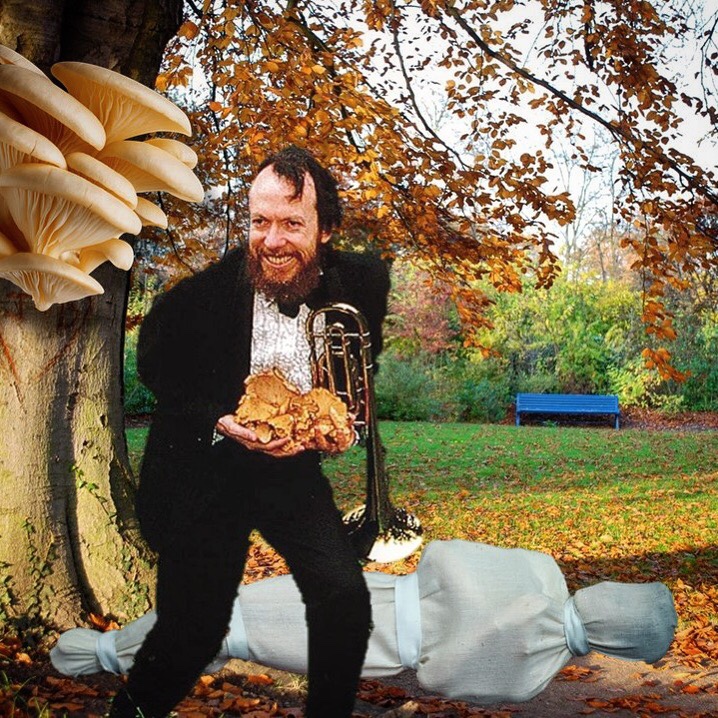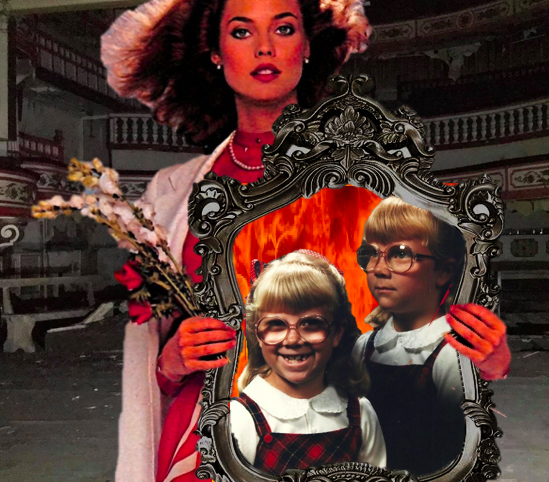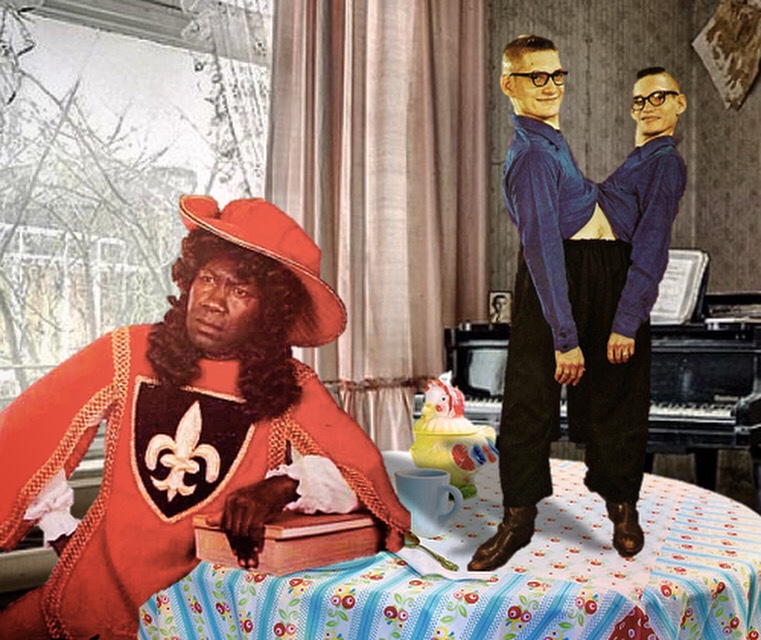Everbleak had a way of magnifying minor obsessions and quirks into huge, operatic extravaganzas. The asylum provided a stage for them: like a big Broadway show, but with a cast of hundreds all performing to their own scripts and scores; private little librettos of insanity. The cacophony was unbelievable sometimes. We would compress bread dough into makeshift ear plugs when they got really vocal.
Daniel DeWitt – former Everbleak psychologist

Lunatics are like a hall of mirrors. They reflect and distort each other, adding to an overall warping of reality. At Everbleak, the hall of mirrors was low-lit and unpredictable: it could reflect laughter as well as monsters. A whole cast of impossible and unlikely characters.
Let’s not beat about the bush: the Frick twins (Hetty and Betty) were evil little pyromaniacs from Los Angeles. Pets, people, post offices and palm trees had all been reduced to charred remains before they were captured and incarcerated (as minors) in Everbleak’s most secure psychiatric wing. They had even managed to set the back seat of their arresting squad car alight, laughing demonically in handcuffs as it burned out of control on Melrose Avenue.
Hetty and Betty’s early life was one of neglect and borderline abuse. Their mother, Jane Frick, was an actress who appeared in b-movie, (extremely) low budget horror films such as ‘Blood Sisters: the Vampire Nuns of Biloxi’, ‘Killer Kangaroo’, and ‘Buried alive with a pervert priest’. Their estranged father was a famous Hollywood director and raconteur that we can’t name for legal reasons, but his ‘thriller’ initials were VP.

The girls grew up around various LA movie studio sound stages, back lots, and on-location haunted houses as their mother acted, drank and screwed in roughly equal measures. The chain-smoking crew became their minders, perpetually trying to keep them quiet with candy (and any other available prop or distraction) as they moved from motel to motel, or spent hot nights sleeping top-to-toe and unattended in their mother’s trailer bed.
They saw gallons of fake blood, saw prosthetic throats slashed, and watched a woman (their mother) possessed by a demon so that she turned into hobo-fucking nymphomaniac nun who then ate her victim’s heads (‘Praying Mantis’, Zebratrope Pictures Inc. 1974).
Did all this exposure to horror, violence and the occult turn them into pyromaniac, psychopathic murderers? The psychiatrist at their trial (for burning down Zebratrope Pictures) certainly thought it a factor. But only within an overarching framework of gross neglect and alcoholism.
Unlike their later arsonist escapades that burned on a grand scale with pugilist-posed corpses as a finale, Betty and Hetty’s early pyromania built its momentum slowly, progressing from trash cans to mattresses, then parked cars with combustibles and accelerants under the gas tanks. Five people and an innocent alpaca died in that final Zebratrope studio fire, but the Frick twins refused to show one shred of remorse as the judge sent them down for life imprisonment in a secure mental institution (they were lucky that California saw death sentences as barbaric).
Sent to Everbleak, they immediately became asylum celebrities / royalty. Psychiatrists were fascinated by them, and fellow patients were terrified of them. They filled the walls of their room with crude crayon drawings of zoos and schools ablaze. And even the occasional drunken visit from their mother couldn’t dampen the broadness of their sedated grins.

Louis le Pendu believed himself to be a fearless French musketeer, but was actually Charles Lamont: a steel press operator from the Chrysler factory in Detroit, where his fantasist personality disorder and erotomaniac obsessions would end up in tragedy.
Let’s rewind a little. Louis would go to the movies at least five times a week. It started simply as a means of escaping the relentless noise and sparks of the production line, but eventually started to encroach beyond the velvet flea pit of the Regal picture house into a whole inner mind-world of melodramatic, swashbuckling fantasy.
It was always the Three Musketeers that inspired him the most. He admired their brotherhood, their confidence, and their sartorial style. And how perpetually cheerful they were. Even in the middle of a perilous situation, or whilst smashing a small barrel over an enemy’s head, they would laugh loudly and boisterously.
Louis wanted to laugh like that: laugh, sweep women off their feet, and cut somebody’s belt so that their breeches fell down.
It started with the wig: the curled locks of a Musketeer dandy (procured from a theatrical costumiers) that Louis would wear to the supermarket, cinema, and the blues bar on 7th. It immediately caused mockery and fist-fights, but Louis didn’t care. Within a few weeks he was wearing full Musketeer regalia onto the Chrysler factory floor (minus the sword).
His supervisors immediately reprimanded him for the safety implications of his lacy, effeminate sleeves and flowing tabard. He was both a fire hazard and a distraction to the other workers. But rather than going home to change (as requested), he immediately challenged the foreman to a duel. To the death. With the aerial of a 1969 Chrysler Newport.
Louis had been wanting to win the favour of Millie ‘Milady’ Munro from payroll for at least a year, and now he was suddenly battling his way up to her mezzanine office, fencing off security and co-workers alike with his aerial rapier.
He expected her to gasp with heaving bosom at his heroics (she wouldn’t be aware of him sniffing his weekly pay packet for a faint scent of her perfume or toilette), but there was no romantic ending to this story: just a foreman with a skewered eyeball, dead amongst the rivets.
Although Louis admitted (at the subsequent murder trial) to stealing Milady’s oversized silken bloomers from her apartment washing line to use as his musketeer ‘kerchief’, she did begin a correspondence with him that lasts to this day.
Louis le Pendu now spends his days as a full-time musketeer in the sun-lounge of Everbleak’s secure wing. His thoughts alternate between defeating the evil Cardinal Richelieu and kneeling before Milady’s pubic triangle as its faithful servant.
